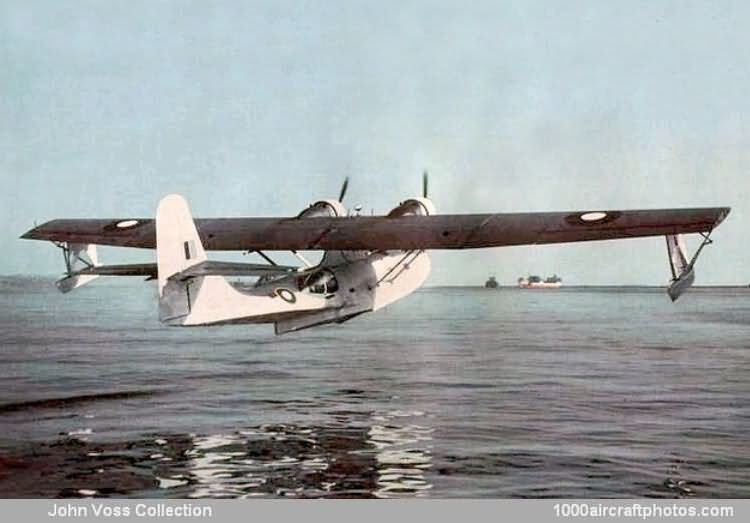04/30/2012. Remarks by Johan Visschedijk: "Boeing Aircraft of Canada Ltd. at Vancouver, British Columbia, had originally been intended to undertake complete Consolidated Model 28-5A production after the first 55 had been made from Consolidated parts, these were delivered to the RCAF as Canso A (s/n 9750 to 9805). This was then changed and they went over to lease-lend flying boat production. Boeing first made 240 Consolidated Model 28-5 (PBY-5), which were delivered to the RAF and RNZAF as Catalina IVBs, and to the USN as PB2B-1s.
Boeing then made 67 Consolidated Model 28-6s under the USN designation PB2B-2 and BuNos. 44228 to 44294. The PB2B-2 had a new fin and rudder, a ball-type nose turret and new radar. The tail unit had been designed by the (US) Naval Aircraft Factory after the directional stability of the PBY-5A had proved unsatisfactory and rudder reversal had occurred under certain flight conditions.
A model PBY-6A amphibian was made in the US with the new tail but the PB2B-2 was the only flying boat version to incorporate it other than the Naval Aircraft Factory PBN which in addition had a lengthened hull. The tall tail was built for Boeing by the Columbia Aircraft Corp. at Portland in Oregon.
The majority of the 67 Boeing-built PB2B-2s were delivered to the RAF as Catalina IVs, while the balance went to the USN. However, of the 47 RAF aircraft, 45 were transferred to the RAAF and most, if not all, of them were ferried to Australia by Qantas Empire Airways' crews. Six of the 20 USN aircraft were transferred to the USAF and served, presumably under their USN serials, on search and rescue operations.
This rare WW II era color photo depicts a British forces Catalina of the SEAC (Southeast Asia Command), the body set up to be in overall charge of Allied operations in the South-East Asian theatre during WW II."
